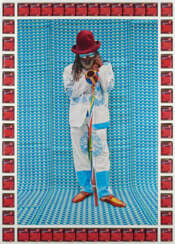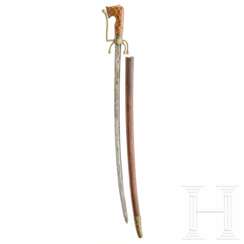moroccan

Mohamed Melehi was a Moroccan painter associated with the Casablanca school, a modernist art movement active in the 1960s in Morocco. Melehi became a professor at the School of Fine Arts of Casablanca, teaching painting, sculpture, and photography. In 1969, Melehi and his colleagues of the Casablanca school organized an exposition-manifeste, or protest exhibition, entitled Présence plastique. The artists displayed their works in Jemaa el-Fnaa in the Marrakesh medina, snubbing an official Moroccan art salon of happening at the same time. This exhibition is regarded as the founding moment of modernism in Morocco.


Mohamed Melehi was a Moroccan painter associated with the Casablanca school, a modernist art movement active in the 1960s in Morocco. Melehi became a professor at the School of Fine Arts of Casablanca, teaching painting, sculpture, and photography. In 1969, Melehi and his colleagues of the Casablanca school organized an exposition-manifeste, or protest exhibition, entitled Présence plastique. The artists displayed their works in Jemaa el-Fnaa in the Marrakesh medina, snubbing an official Moroccan art salon of happening at the same time. This exhibition is regarded as the founding moment of modernism in Morocco.


Oskar Koller was a German painter and graphic artist.
He studied at the Academy of Fine Arts in Nuremberg and became known primarily for his vivid abstract watercolors of flowers, trees, landscapes, and people.



Henri Matisse, a renowned French visual artist, was celebrated for his vibrant use of color and fluid, original draughtsmanship. Born on December 31, 1869, in Le Cateau-Cambrésis, France, Matisse initially pursued a career in law before turning to art. He first began painting in 1889, a change inspired by convalescence art supplies his mother provided. This marked the beginning of a journey that would see him become a leading figure in modern art.
Matisse's career is notable for its stylistic evolution yet consistent aim to capture the "essential character of things." His early works, characterized by intense colorism, earned him recognition as one of the Fauves, or "wild beasts." The period from 1908 to 1913 was marked by significant developments, with works like "Reclining Odalisque" and "The Red Studio" showcasing his mastery in balance and serenity. In the 1920s, his style evolved to more relaxed forms, with a focus on light, color, and decorative patterns in paintings like his odalisque series.
Matisse's exploration of various mediums, including sculpture and paper collage, reflects his innovative spirit. His later years were dominated by cut paper collages, as health challenges limited his ability to paint. These works, alongside his bold drawings and sculptures, cemented his status as a pioneer in visual art.
For collectors and art experts, Matisse's work remains a testament to creative evolution and expressive use of color and form. His masterpieces can be found in prominent museums and galleries worldwide, continuing to inspire and fascinate art enthusiasts.
To stay updated on new product sales and auction events related to Henri Matisse's art, sign up for our updates. This subscription will keep you informed about opportunities to appreciate and acquire works connected to this iconic artist.











































































